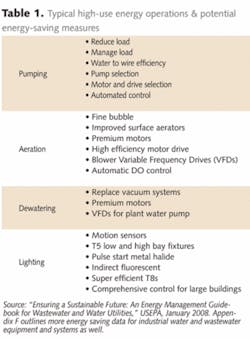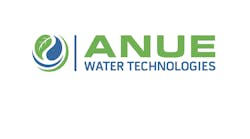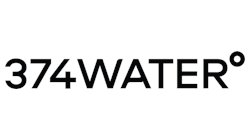By Peter Tunnicliffe
Water main breaks, sewage spills, aging water pipes and outdated treatment facilities have created serious public health and safety concerns in communities across America. Moreover, the country's overburdened and antiquated water infrastructure creates sustainability concerns. While a seemingly small percentage of national energy consumption is used for drinking water and wastewater infrastructure, these systems in the United States spend billions of dollars a year on energy consumption — a demand that's only expected to grow over the next decade.
At this critical time during Congressional debate on how much money to allocate for the country's water infrastructure, decision-makers should consider promoting use of design-build (and other alternate project delivery mechanisms) as a means to effectively address our deteriorating water systems sustainably and energy efficiently.
As municipal and industrial facilities alike look for ways to reduce energy usage for water infrastructure, Water Design-Build Council members offer innovative solutions and technologies to meet these pressing needs. The council's mission is to promote best practices for design-build to facilitate productive, collaborative relationships between service providers and local governments in order to ensure communities sustainable, energy-efficient facilities.
With Congress and the Obama Administration moving forward with new energy legislation to reduce greenhouse gas emissions, improve energy efficiency and boost investment in renewable energy, now is the time for municipalities and water project managers to make energy reduction and sustainability a greater priority. Below is a look at the current state of energy usage within the water and wastewater industry.
1. The water industry remains a heavy consumer of energy:
- An estimated 3% of national energy consumption is used for drinking water and wastewater services. This equates to adding about 45 million tons of greenhouse gas to the atmosphere, according to the U.S. Environmental Protection Agency.
- U.S. drinking and wastewater systems spend nearly $4 billion a year on energy to pump, treat, deliver, collect and clean water.
- Energy costs for water and wastewater can account for 30% of a municipality's total energy bill.
- Demand for electricity at wastewater facilities is expected to grow by 20% over the next 15 years, according to the U.S. Department of Energy.
2. Innovation and improving efficiency are key to energy reduction:
- Energy consumption in most water and wastewater systems can be reduced significantly through cost-effective efficiency measures, such as regular equipment inspections, maintenance and efficiency tests.
- Replacing system components — including equipment, systems and controls — with new, high-efficiency equipment and process technologies optimizes performance of existing facilities. Opportunities exist to improve energy performance of most municipal treatment facilities by 15%, while reducing costs and promoting environmental stewardship, states the New York State Energy Research & Development Authority.
- Recovering energy from existing systems can maximize the energy produced by a facility. Inventing new systems approaches, such as capturing kinetic energy (leveraging the power of moving water), taking advantage of thermal capacity (optimizing the heat transfer potential of water), and developing a deep understanding of communities, sites, land uses, etc. (maximizing the planning and design process for water facilities), can be instrumental in reducing energy and improving efficiency, according to CDM Inc.
3. Improved energy and water efficiency in industrial applications also is possible:
- Many of the same efficiency measures can be incorporated in industrial water and wastewater applications.
- As part of the American Recovery and Reinvestment Act, the Obama Administration is providing $256 million to support energy efficiency improvements in major industrial sectors across the American economy. This includes:
- Combined heat and power (CHP), district energy systems, waste energy recovery systems and efficient industrial equipment — $156 million,
- Improved energy efficiency for information and communication technology — $50 million, and
- Advanced materials in support of advanced clean energy technologies and energy-intensive processes — $50 million.
- In each of these three sectors, there's ample opportunity for increased water and wastewater recovery as well as improved energy efficiency in industrial applications.
- Southern California's BeWaterWise.com program was able to save 1,461 acre feet a year via 12 industrial projects completed from 2005-2007 — including a metal finisher, commercial laundry and paper mill — generating $24.5 million in investment with $1.4 million in incentives.
4. The design-build project process promotes quicker path to energy reduction:
- Design-build is one of the most efficient, effective approaches for getting water projects started and completed more quickly, as one firm assumes responsibility for design, construction and commissioning.
- Such projects have paved the way for reclamation and reuse of highly treated water, helped deploy sophisticated systems for conversion of “waste” products (including biosolids and biogas) and improved water quality and delivery to communities to provide them with the most energy-efficient facilities.
- They often utilize state-of-the-art, high-efficiency drives and motors, leading to more energy-efficient facilities. Project delivery also stimulates local economies more rapidly than conventional design-bid-build delivery.
About the Author: Peter Tunnicliffe is president of the Water Design-Build Council and senior vice president of CDM Inc. For more information, contact Sarah Chittenden: 202-833-1950, [email protected] or www.waterdesignbuild.org
Energy Benchmarking Resources- The EPA Energy Star program has an “Energy Benchmarking Tool for Wastewater Utilities” with a series of Best Practices available at: www.energystar.gov/benchmark. This includes a portfolio manager for various industrial applications to measure and track energy use, energy cost, and carbon emission and corresponding reductions.



